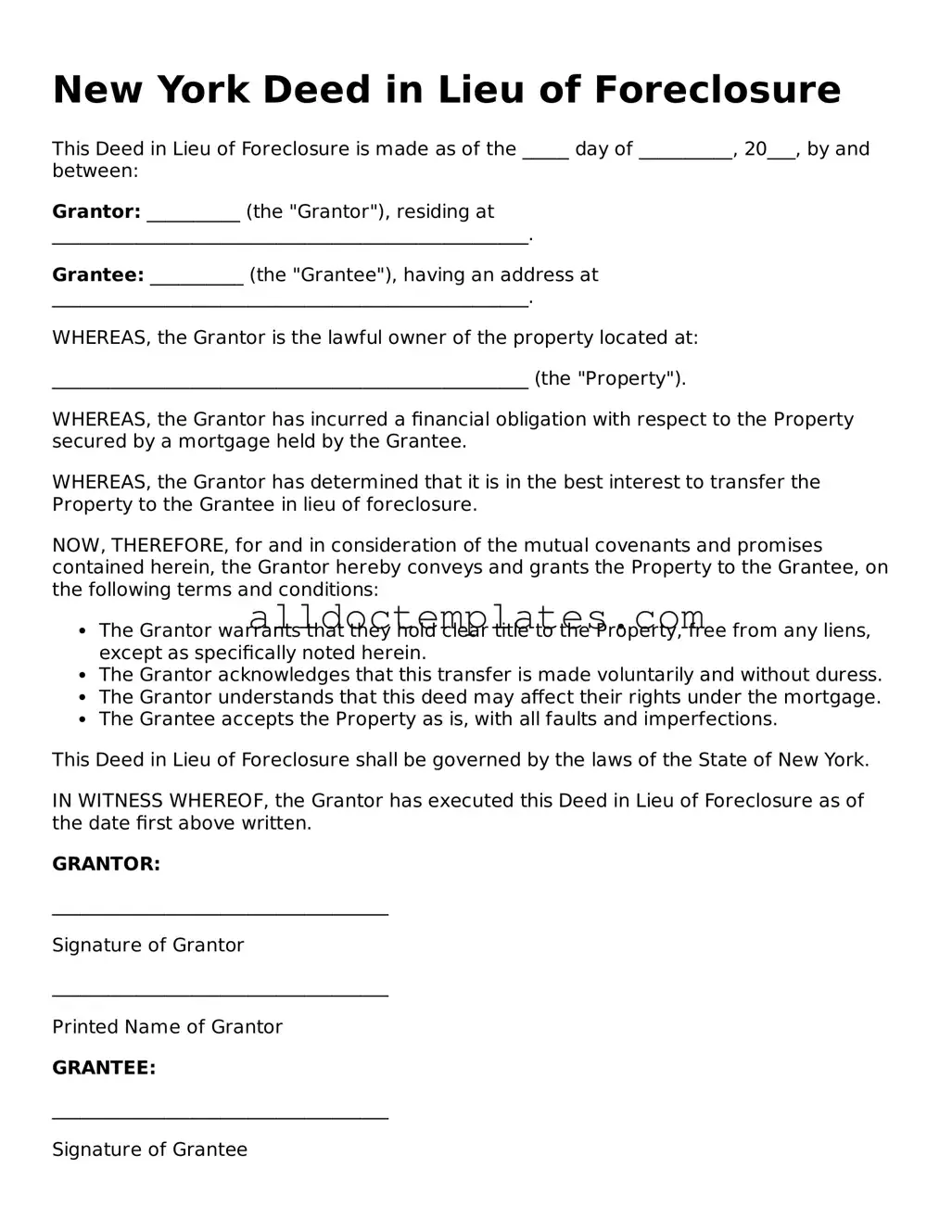New York Deed in Lieu of Foreclosure
This Deed in Lieu of Foreclosure is made as of the _____ day of __________, 20___, by and between:
Grantor: __________ (the "Grantor"), residing at ___________________________________________________.
Grantee: __________ (the "Grantee"), having an address at ___________________________________________________.
WHEREAS, the Grantor is the lawful owner of the property located at:
___________________________________________________ (the "Property").
WHEREAS, the Grantor has incurred a financial obligation with respect to the Property secured by a mortgage held by the Grantee.
WHEREAS, the Grantor has determined that it is in the best interest to transfer the Property to the Grantee in lieu of foreclosure.
NOW, THEREFORE, for and in consideration of the mutual covenants and promises contained herein, the Grantor hereby conveys and grants the Property to the Grantee, on the following terms and conditions:
- The Grantor warrants that they hold clear title to the Property, free from any liens, except as specifically noted herein.
- The Grantor acknowledges that this transfer is made voluntarily and without duress.
- The Grantor understands that this deed may affect their rights under the mortgage.
- The Grantee accepts the Property as is, with all faults and imperfections.
This Deed in Lieu of Foreclosure shall be governed by the laws of the State of New York.
IN WITNESS WHEREOF, the Grantor has executed this Deed in Lieu of Foreclosure as of the date first above written.
GRANTOR:
____________________________________
Signature of Grantor
____________________________________
Printed Name of Grantor
GRANTEE:
____________________________________
Signature of Grantee
____________________________________
Printed Name of Grantee
STATE OF NEW YORK
COUNTY OF ______________
On this _____ day of __________, 20___, before me, a Notary Public, personally appeared ________________________, known to me or satisfactorily proven to be the person whose name is subscribed to the within instrument, and acknowledged that they executed the same for the purposes therein contained.
IN WITNESS WHEREOF, I hereunto set my hand and official seal.
____________________________________
Notary Public
